Improve Your Soil by Raking Less
Mowing leaves into your lawn can improve its vigor, and unraked leaves in planting beds makes perennials happy
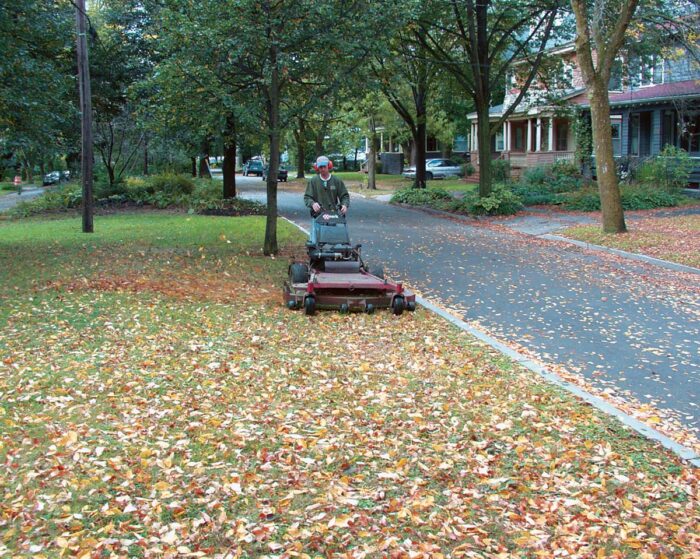
If you dread the annual fall leaf-raking marathon, I have good news for you: Raking and collecting leaves every autumn is a tradition without scientific basis. Research has proven that mowing leaves into your lawn can improve its vigor, and observation shows that unraked leaves in planting beds don’t smother shade-tolerant perennials.
Learn more: Not sure what to do with all of those leaves? Consider making leaf mold.
Based upon research at several universities, the organic matter and nutrients from leaves mown into lawn areas has been proven to improve turf quality. At Michigan State, researchers set a rotary mower to cut at a height of 3 inches and then mowed an 18-inch-deep layer of leaves into test plots. That’s the equivalent of 450 pounds of leaves per 1,000 square feet. The tests resulted in improved soil and healthy lawns with few remnant leaves visible the following spring.
You can achieve similar results if you set your mower to cut at the same height as in the Michigan State study, and mow at least once a week during peak leaf fall when your lawn reaches a height of 4 inches. Leaves shred most efficiently when slightly damp, so mow after a light dew. If you follow these simple guidelines, you will never rake another leaf and improve the quality of your soil.
Build planting beds with leaves
Under trees or in other shady spots where a lawn won’t grow, you can create planting beds from fallen leaves as a source of soil-building organic matter. Shredded leaves applied as mulch protect tree roots from heat and cold and retain soil moisture during dry spells. Some gardeners believe that excess leaves can harbor insects or disease, but I have experienced no such problems in my garden.
After we bought our property, I created planting beds where the leaves would naturally collect on our densely shaded and sparse front lawn. It’s been 15 years since I’ve raked a single leaf dropped by these trees. Instead, the leaves settle among the hellebores, epimediums, Japanese forest grass, hostas, and spring-flowering bulbs, where they decompose over time, just like on the forest floor.
Easy, ecological, and fiscally responsible
Municipalities, both large and small, spend thousands, even millions, of dollars each year to collect, transport, and process autumn leaves, tying up resources that could be used elsewhere in our communities. If we all keep our leaves on our properties, we will improve our gardens, save money, and enhance the environment we all share. To treat leaves as trash is both environmentally foolish and financially ruinous. Currently, many municipalities encourage residents to rake leaves to the curb for collection, but before they are collected, heavy rains often wash the leaves into catch basins. There they decompose and release phosphorus and nitrogen into streams and rivers that flow through the community. These excess nutrients contribute to algae blooms during the summer, which result in lower oxygen levels, making it difficult for fish and other aquatic species to survive.
Your own source of free fertilizer
A little effort can supply an organic source of nutrients for your plants. Here are two ways to use your leaves.
1. Pile composting for mixed borders
-
- Rake the leaves into loose piles or in wire bins about 4 feet square within your borders.
- Mix in a few shovelfuls of soil, and add 20 to 30 gallons of water to aid decomposition.
- Pull the piles or bins apart in the spring, and spread the decayed leaves throughout the border.
- Cover the decayed leaves with a 1-inch-deep layer of fresh mulch.
2. Sheet composting for annual beds
- Rake your leaves into the empty beds, and shred them with a lawn mower.
- Sprinkle the leaves with a 1-pound coffee can’s worth of 5-10-5 fertilizer per 100 square feet of garden.
- Turn the leaves, and water thoroughly to disperse the fertilizer, which speeds decay.
- Turn the leaves again in spring, and plant right through the remaining clumps, which will provide nutrients as they decompose.
Fine Gardening Recommended Products
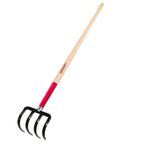
Razor-Back Potato/Refuse Hook
Fine Gardening receives a commission for items purchased through links on this site, including Amazon Associates and other affiliate advertising programs.
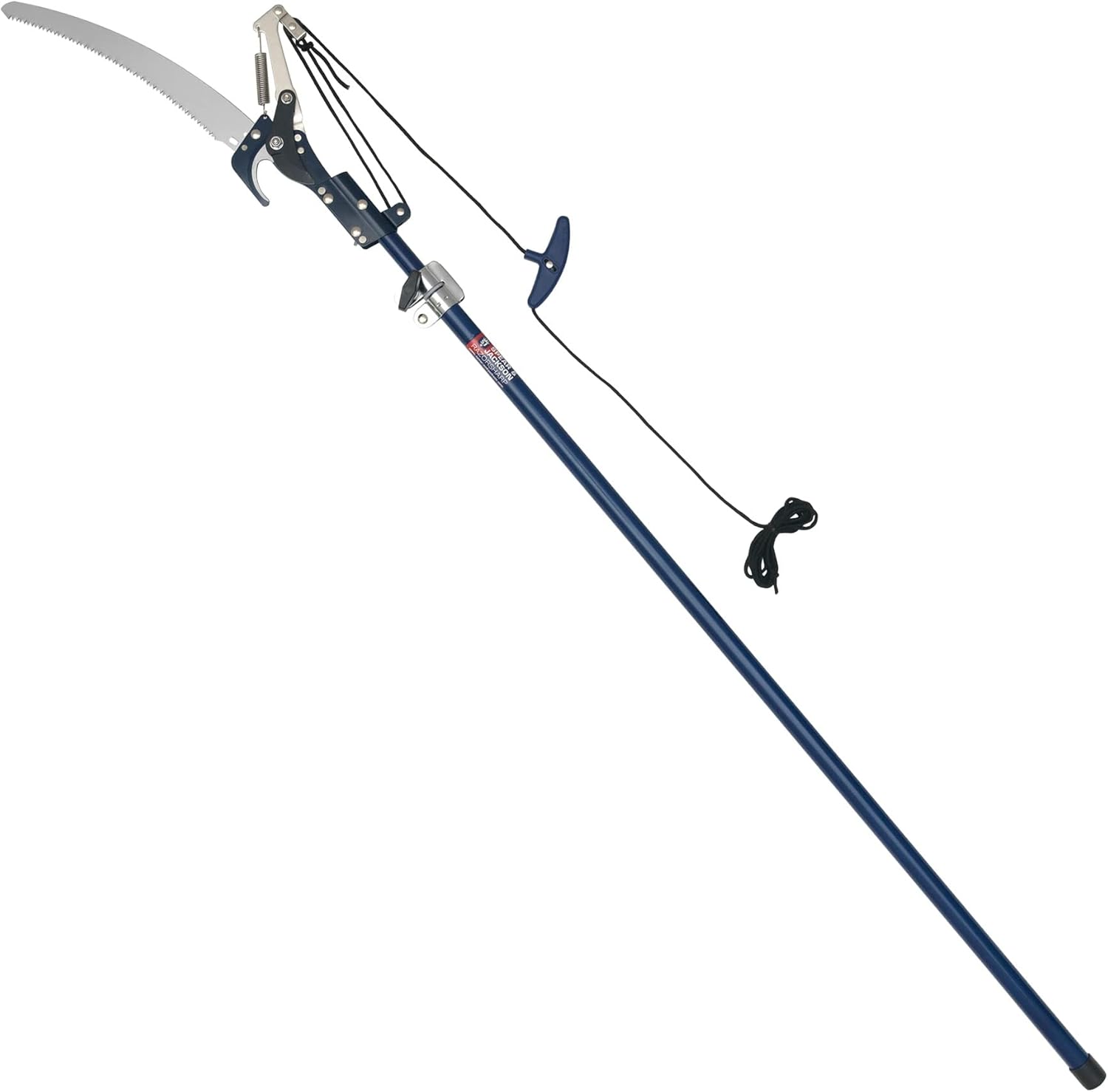
Spear & Jackson 4930FZ Razorsharp Telescopic Tree Pruner
Fine Gardening receives a commission for items purchased through links on this site, including Amazon Associates and other affiliate advertising programs.
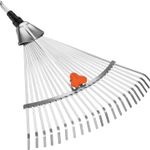
Gardena 3103 Combisystem 12-Inch To 20-Inch Adjustable Metal Fan Rake Head
Fine Gardening receives a commission for items purchased through links on this site, including Amazon Associates and other affiliate advertising programs.

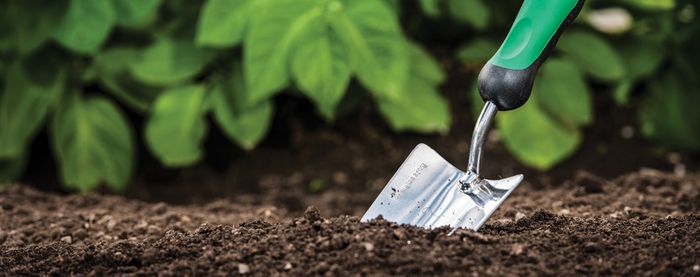
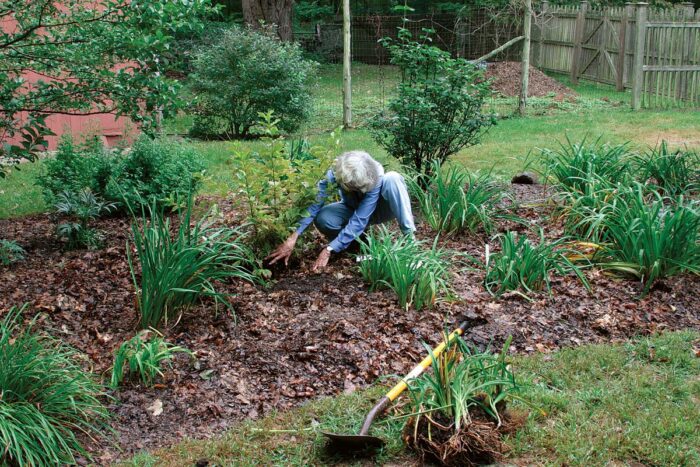
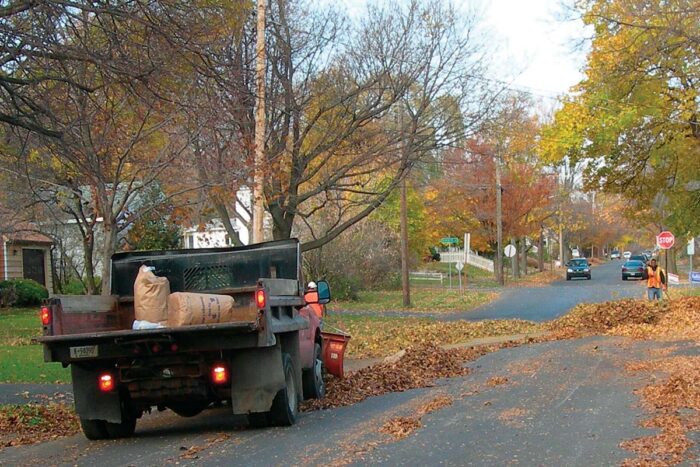
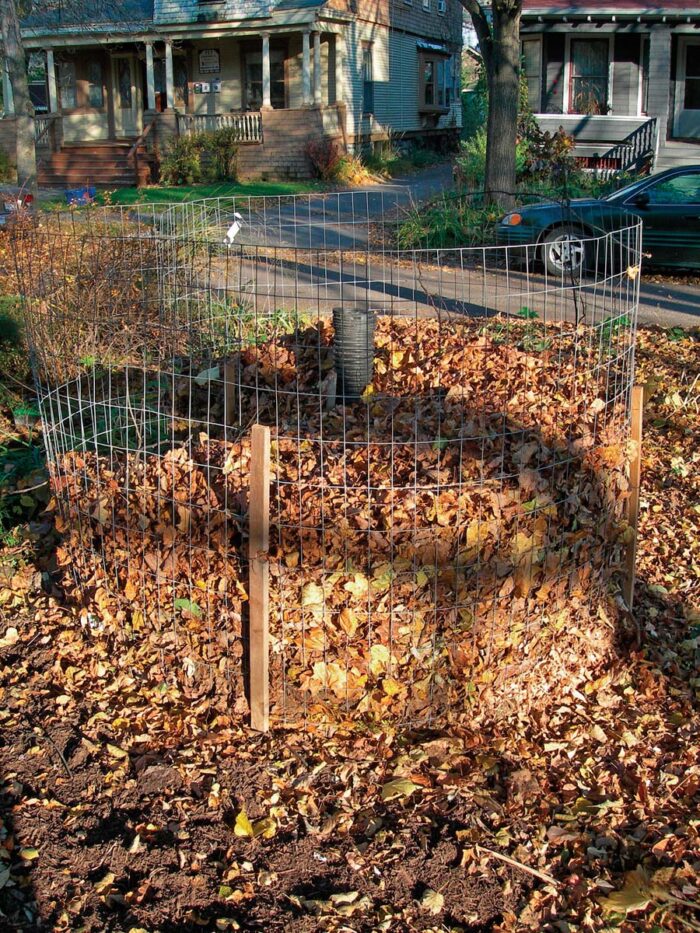




Comments
There's still plenty of superstition in this no-rake story. You don't need a rotary mower, or any kind of power mower; you don't need to mow once a week. We have several railroad rights of way in our city that get mowed maybe three or four times a year, they get plenty of fallen leaves, and it's the healthiest grass in town.
In Fantasy Land, it's never too cold or wet to mow. I live in Tennessee. I never get the chance to mulch my leaves. Plus my nitrogen is already off the scale.
i was always told that oak leaves were too acidic to leave for mulching in most plant beds....but these new sites are saying DON't rake, mow to small bits and/or make a mulching bed out of leaves.....has dirt changed over the last 50yrs??!!
You mentioned the Michigan State University study of mulching lawn leaves. This does improve the health of the lawn. One thing you did not mentioned, which is significant, it that mulching leaves of certain trees on your lawn will also reduce dandelions. Here is some more info on that: http://thefarmgardenblog.com/2015/11/07/mulching-leaves-reduces-dandelions-in-lawns/
I do a combination of this. In frontyard I've had a problem with tarspot so I have been collecting leaves using a mulching mower with bag attached and depositing in a sideyard bed as a top dressing. In the back yard I've just been mulching leaves back into the yard. The back yard is being renovated to address a long standing ground ivy problem and downsizing of raised beds. I am hoping to begin the spring by knocking back the ground ivy by unfortunately using an herbicide. Once I can I will plant clover (maybe) and grass seed. I'm not looking for a monoculture lawn but I don't want more ground ivy as that pretty much dies back in winter leaving a somewhat muddy mess.
nice info
I liked the way you are working. keep it up!
I have four giant leaf maples near my home. Does anybody simply toss them into garden beds? I tried mulching those on the yard, it's the rest of the property I worry about smothering. Wondering.
Log in or create an account to post a comment.
Sign up Log in